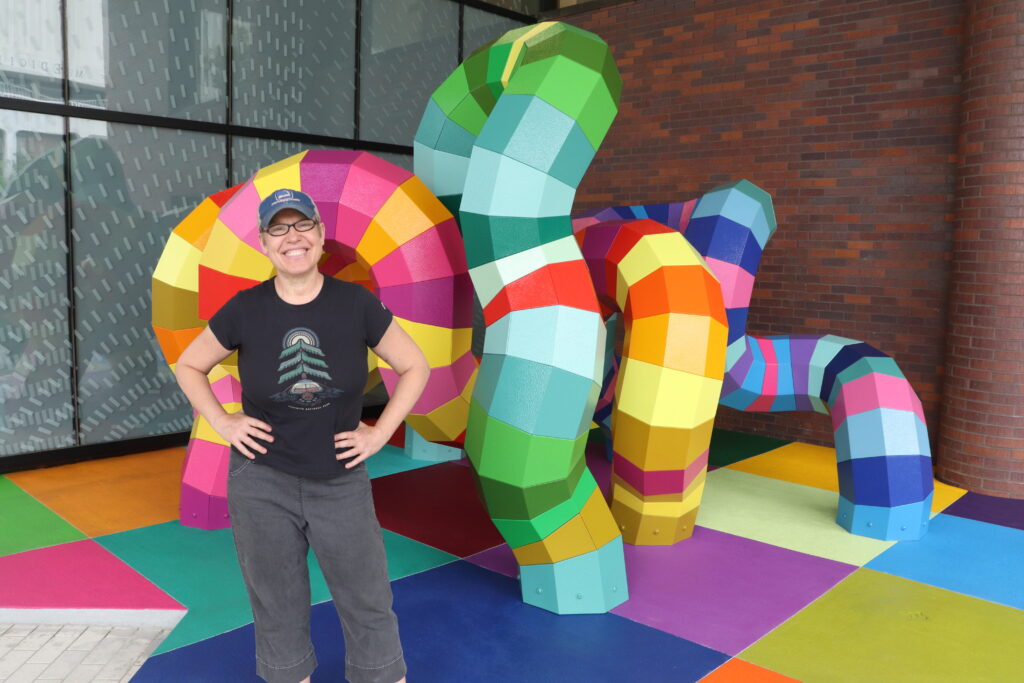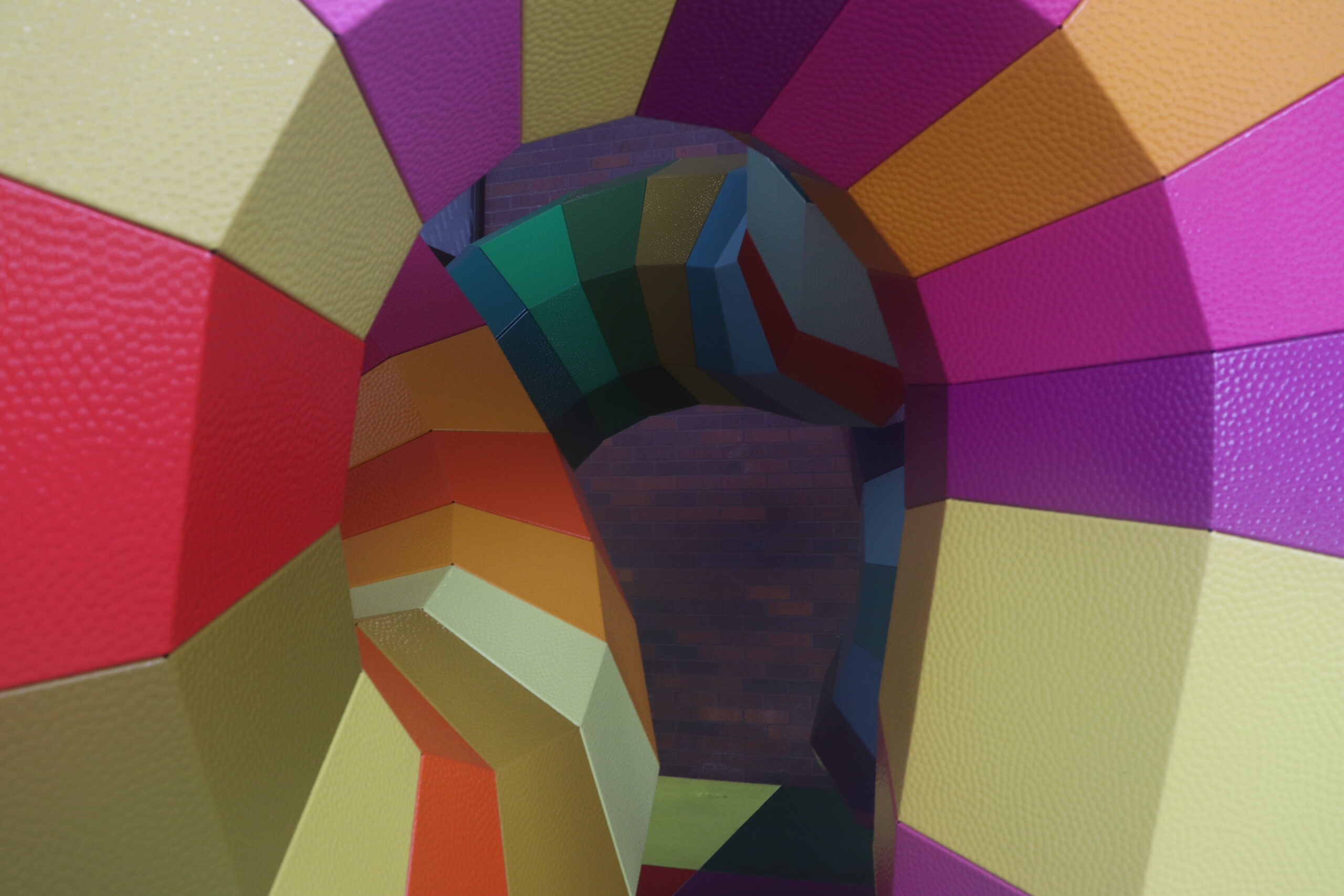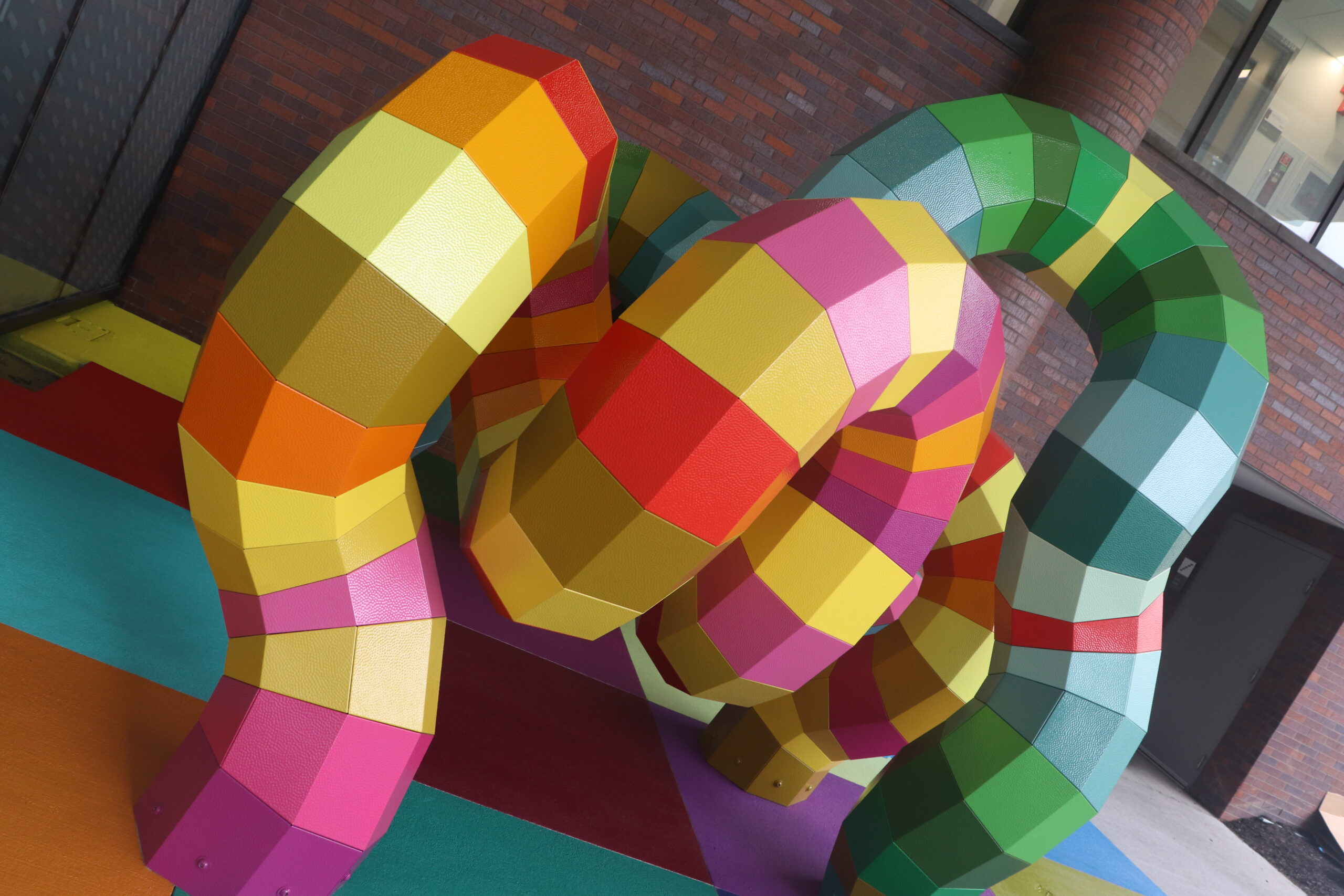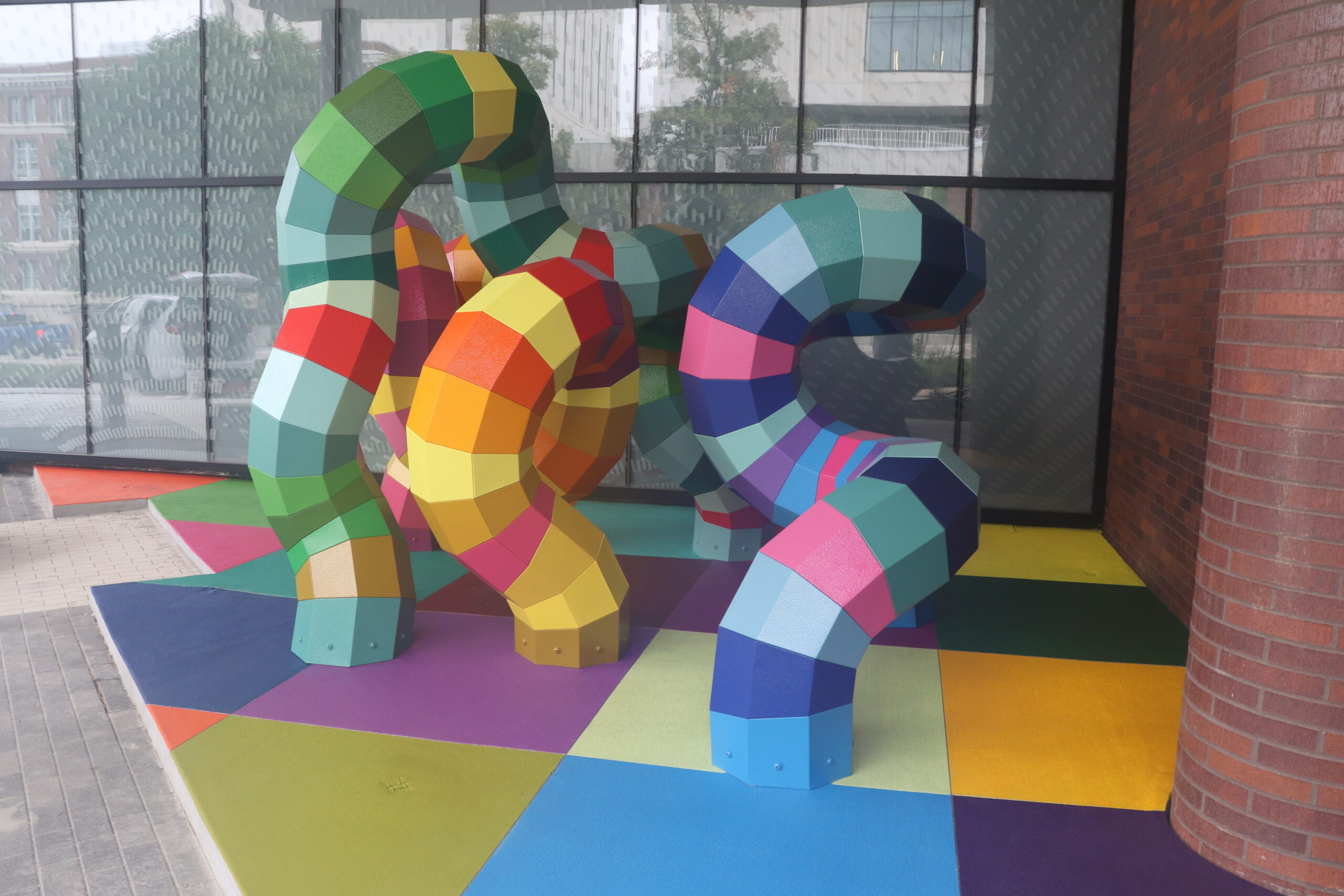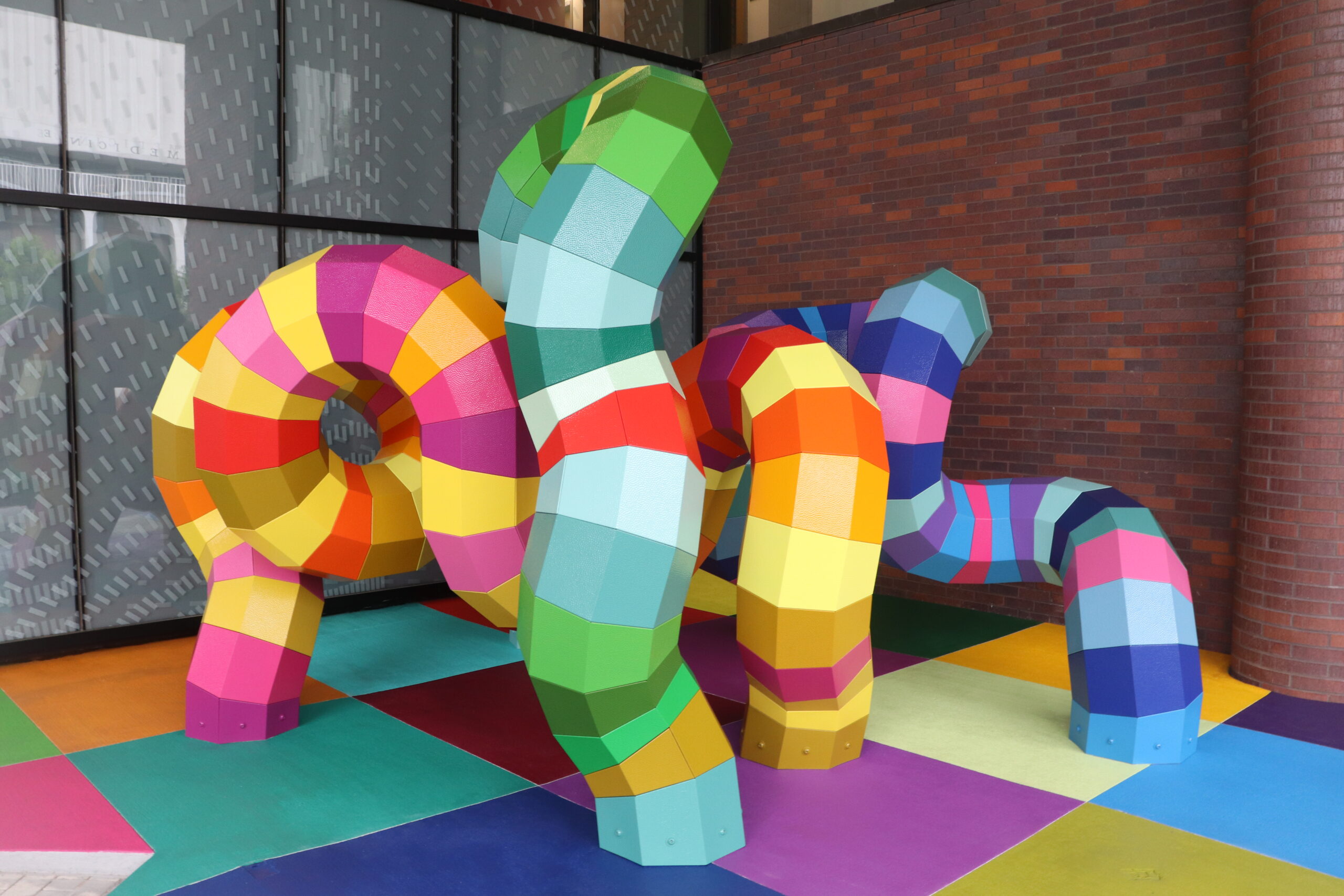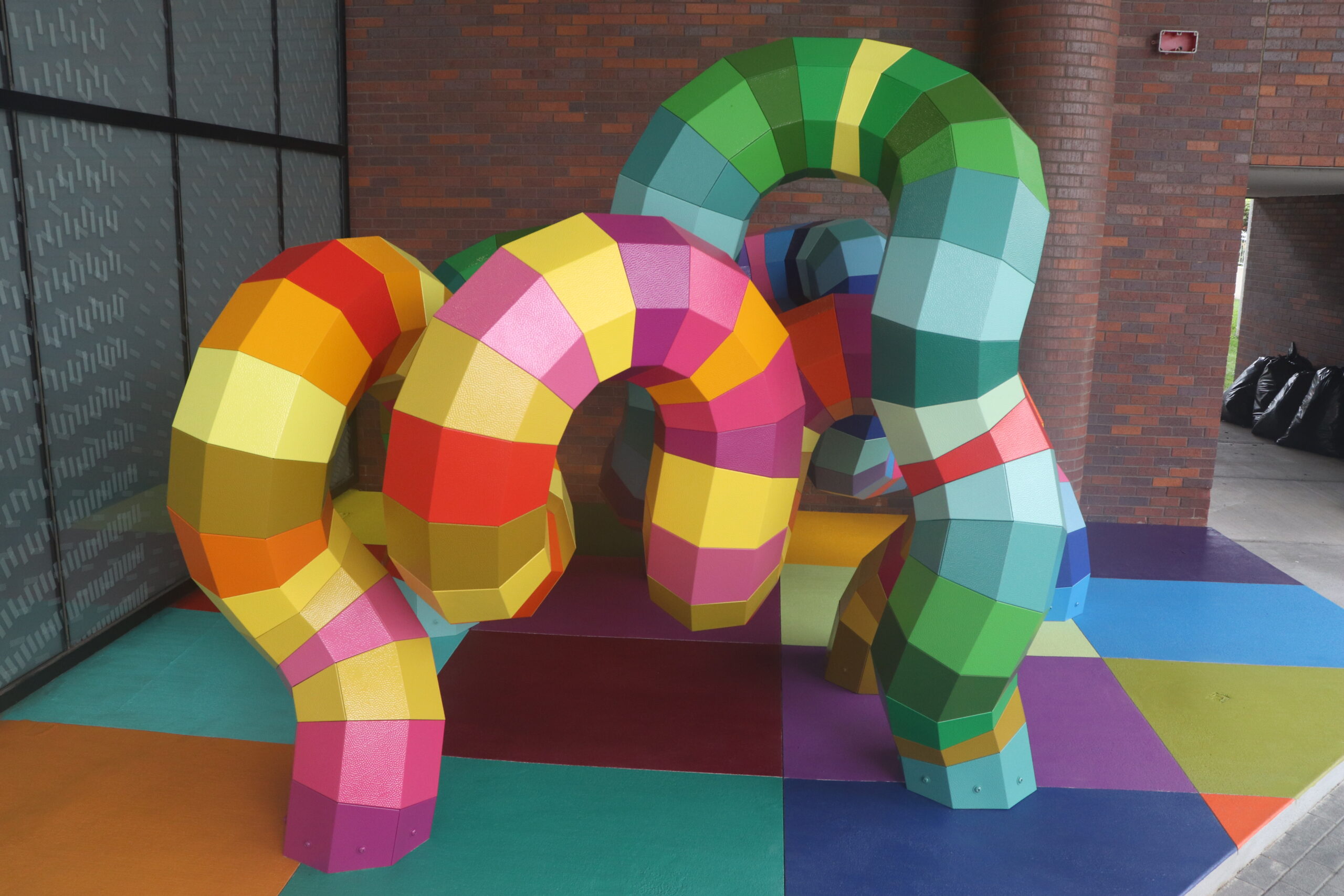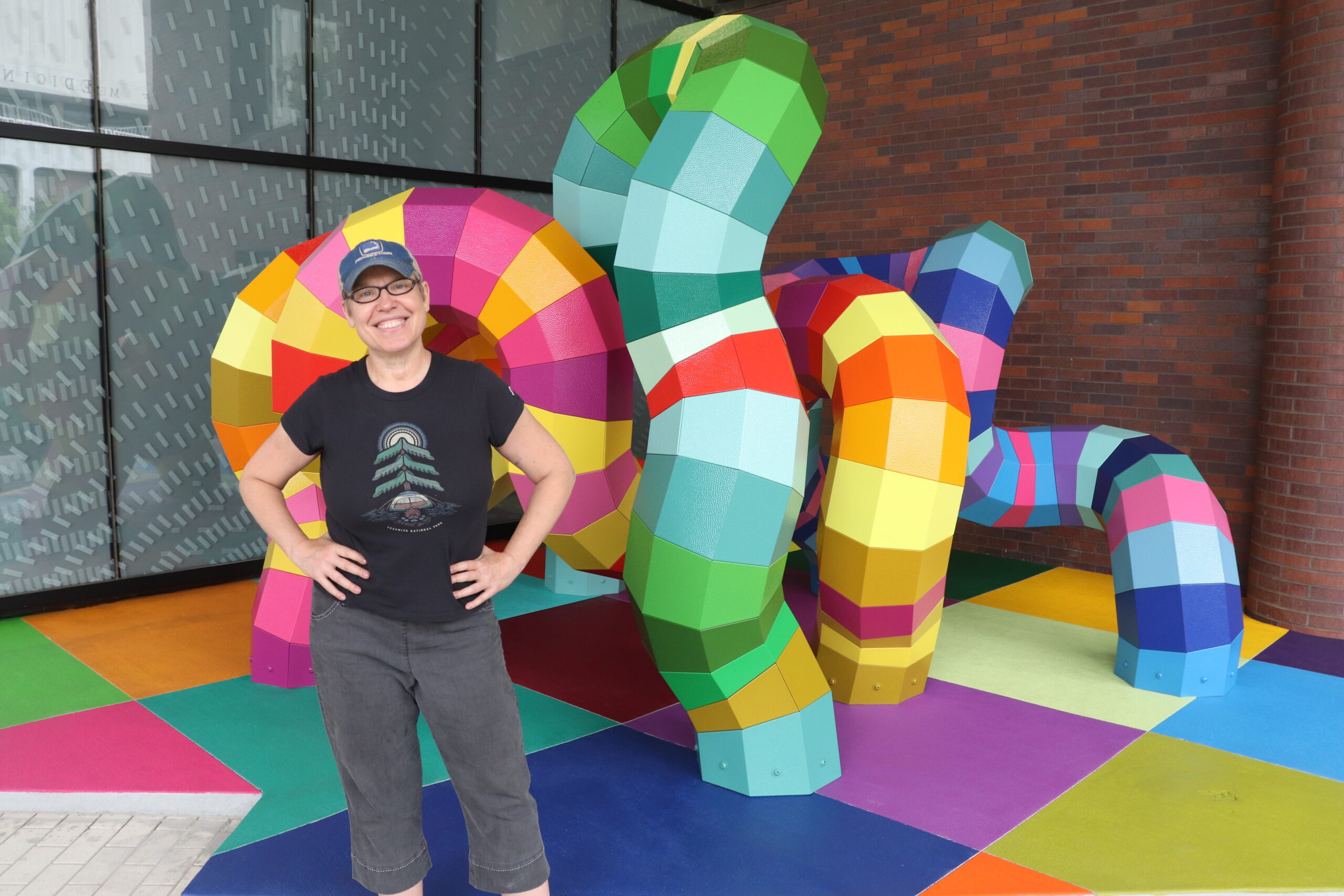Nebraska’s latest 1% for Public Art Project sits in front of the Williams Science Hall on the Omaha campus of the University of Nebraska Medicine (UNMC).
The sculpture, titled DE NOBIS ABUNDANS; ABOUNDS WITHIN US, was installed by Shasti O’Leary Soudant, along with her husband, Jethro in early August. Soudant is a multidisciplinary artist, sculptor, designer and writer located out of Buffalo, New York.
In her artist statement, Soudant states this piece alludes to the human DNA strand we all share, and the aim of medicine to investigate the mysteries that abound within us all. Soudant says while the subject matter is very serious, the sculpture itself is approachable and fun. She often uses this tactic in her artwork for talking about important issues.
“[The sculpture] is just the silliest thing you can imagine, kind of ridiculous visually,” says Soudant, who went on to say that her goal was to create something lighthearted that medical students could continuously look to for stress relief. “Art is a really profound part of the [healing] process that allows for the emotional elasticity that you need when you are undergoing severe stress.”
The UNMC Healing Arts Program dictates the criteria for artwork on campus, and the art collection aims to improve the hospital experience for patients by connecting them to the power of art. Curator Colleen Heavican Cass says this call for art emphasized the student focused aspect of the building, which also houses the UNMC Office of Inclusion and Equity. The Selection Committee wanted to commission an artwork that was playful yet relevant for the UNMC students on campus and what they might be studying.
With no arts programming offered on campus, this sculpture aims to help with exposing students to more art. Heavican Cass hopes students will engage with the piece as an escape from stress or a study break.
The UNMC Healing Art collection is often used to welcome new students and patients and can help people navigate through campus. Most of the artwork is located in sites throughout campus that are open to the public to view.
“I would say the majority of people [who visit the campus] might not have ever gone into an art museum, but when they walk into the cancer center or walk onto our campus and encounter the artwork, they become attached to it.” says Heavican Cass.
 Soudant will continue to place artwork in public spaces and focus on infusing delight in her work. In this artwork, she hopes people will be delighted that they can take the work home with them. Or at least, an augmented reality (AR) version of it. Visitors can scan the QR code located on the piece and can see the sculpture in their space, move around it, and share it with others directly on their phone.
Soudant will continue to place artwork in public spaces and focus on infusing delight in her work. In this artwork, she hopes people will be delighted that they can take the work home with them. Or at least, an augmented reality (AR) version of it. Visitors can scan the QR code located on the piece and can see the sculpture in their space, move around it, and share it with others directly on their phone.
Soudant’s recent AR works include Burden of Conquest: An Augmented Reality Art Game in Corning, New York. This AR experience allows viewers to see 11 “invisible cities” through the power of AR. Hidden in each virtual city is that city’s Heart—a small digital sculpture—that when discovered, provides you with a QR code to access a physical 3-D printed version at The Southeast Steuben County Library in Corning, NY.
While Soudant believes that AR has become a medium of its own, she also used it to help inform the process of this project during the last two years. By creating the piece in a program with AR capabilities, she could experience the presence of the piece, brainstorm solutions, and work with the program in conversations with fabricators.
The artist reflected on sculptures as we know them, that one of their most most compelling attributes of a sculpture is their physicality, their ability to take up space and our ability to move around them. She sees a similar potential with AR, but in creating alternate realities. Ultimately, she conceded that she will continue making sculptures to be enjoyed in real life.
- DE NOBIS ABUNDANS; ABOUNDS WITHIN US
- DE NOBIS ABUNDANS; ABOUNDS WITHIN US
- DE NOBIS ABUNDANS; ABOUNDS WITHIN US
- DE NOBIS ABUNDANS; ABOUNDS WITHIN US
- DE NOBIS ABUNDANS; ABOUNDS WITHIN US
- Artist Shasti O.S. with her artwork “E NOBIS ABUNDANS; ABOUNDS WITHIN US” after completing the installation

